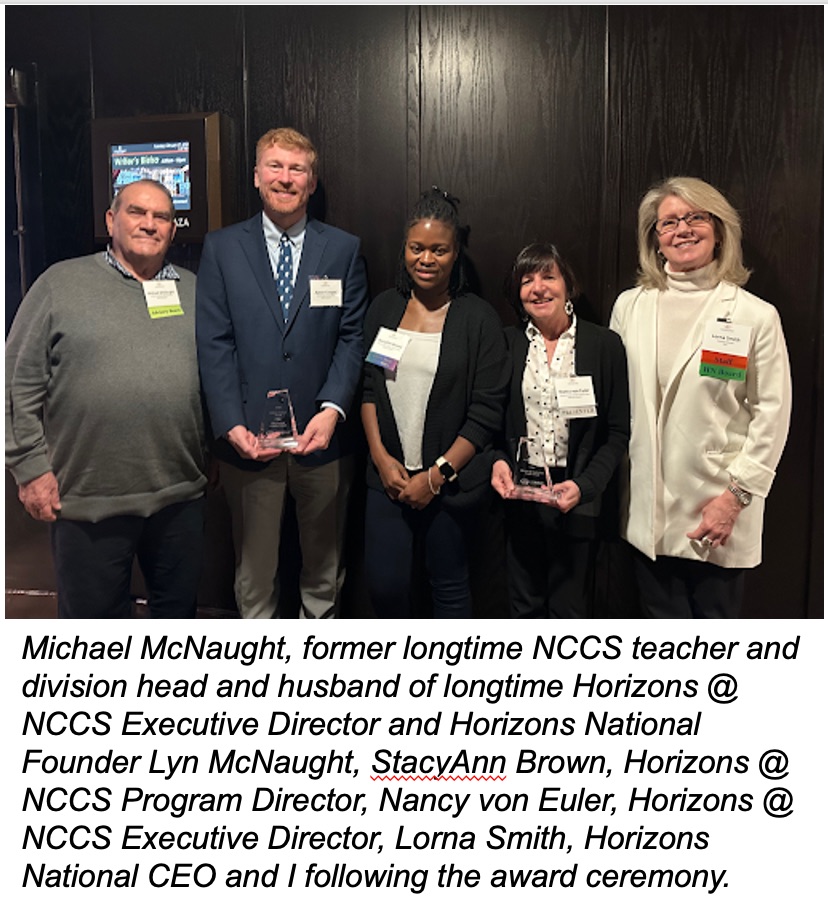This is a continuation of the Mission Focus series. Links to prior reflections may be found below.
NCCS Mission:
“We create an active, joyful learning environment where children are challenged to think deeply, question confidently, and act generously so that they may lead lives of impact and purpose.”
Intellectual capacity and student voice are only as meaningful as the impact they have on others. At NCCS, the principle of acting generously underscores our commitment to nurturing a mindset focused on collective well-being rather than individual interests. This ethos extends beyond mere academic achievement; it encompasses fostering empathy, understanding, and compassion among our students.
Throughout the past week, a series of events highlighted our community’s dedication to this principle.
Thank you to all who helped us celebrate the success of our Horizons program’s 60th anniversary. Thanks to the dedication and support of many, since 1964, this pioneering organization has provided academic and enrichment programming (and swimming lessons!) for literally thousands of students from underserved or less well represented populations in the neighboring area.
Thank you also to those who contributed to the Kyle A. Markes (KAM) Day of Service last Saturday. With over 100 NCCS and Horizons students, parents, faculty and staff working together in support of a dozen non-profit partner organizations and the school itself, it was a wonderful display of selflessness.
In addition to the impressive array of KAM Day of Service activities, our 8th graders volunteered at a variety of local service organizations including the Community Foodbank, New Canaan Nature Center and Rising Starr Horse Rescue and our 9th graders worked on their Community Action Projects (CAP). Each CAP represents a problem the student sees in the community, either here at NCCS or in our neighboring towns and their plan to make positive change. For example, last weekend, 9th grader Will was here in support of pet rescue organizations while Grace supported beach cleanup. Over the course of the next several weeks, all of our 9th graders will be involved in taking similar action in support of the larger community.
The practice of acting generously can also begin on a small scale. I had the chance last week to meet with six Lower School students in our Plus Program’s “Emerging Leaders” club to discuss ideas they have for improving the NCCS community. These ideas included creating inspirational rock messages for our Wellness Garden and constructing a “Good News” drop box to collect and share upbeat happenings on campus.
It was so refreshing to see so many adults modeling and students of all ages practicing this embodiment of our mission and demonstrating generosity for the greater good.
Our Mission: Respect for Childhood, A Focus on Children (Feb. 19)
Our Mission: The Role of “Challenge” (Feb. 25)

